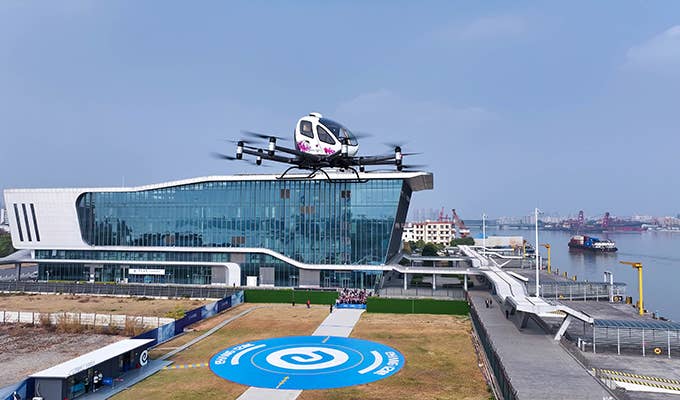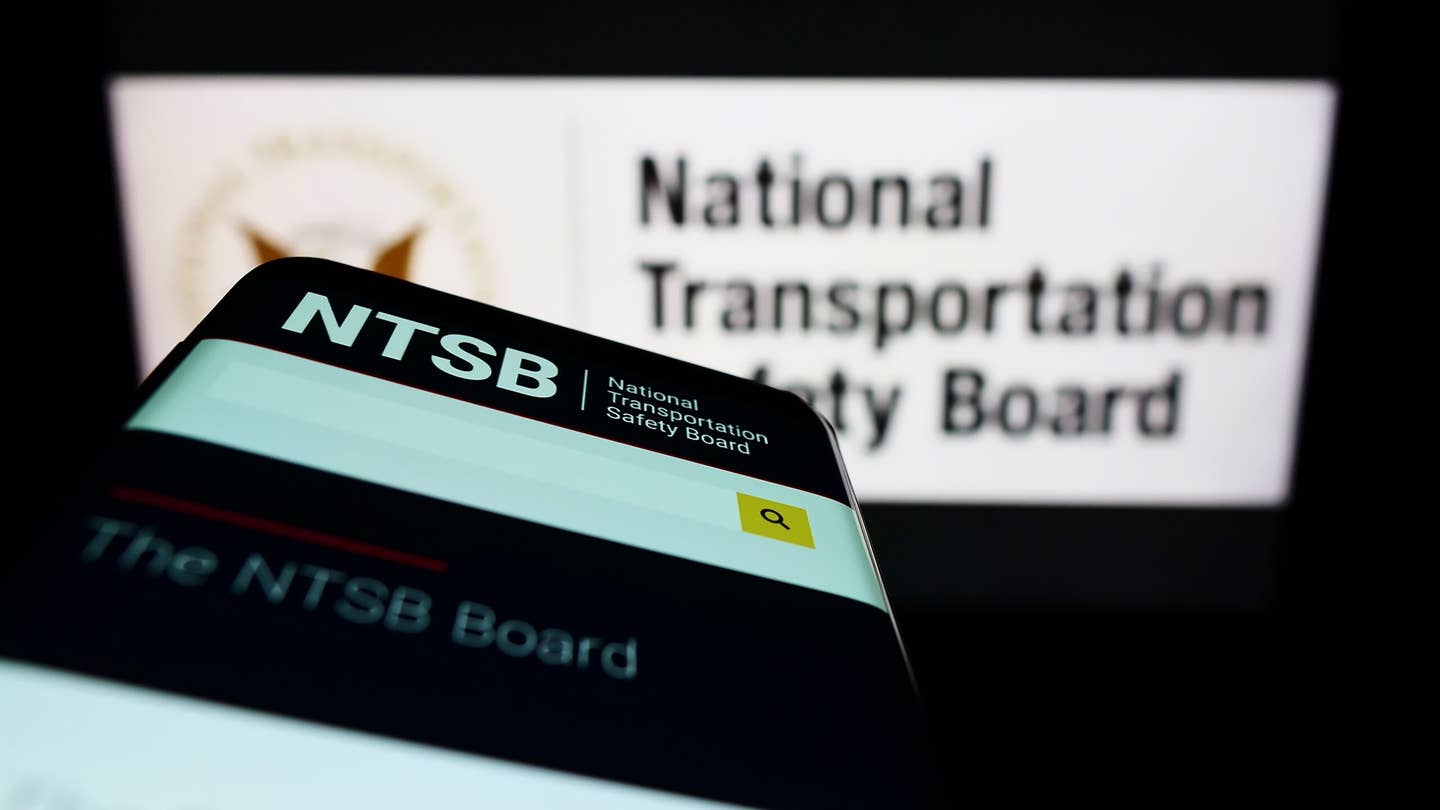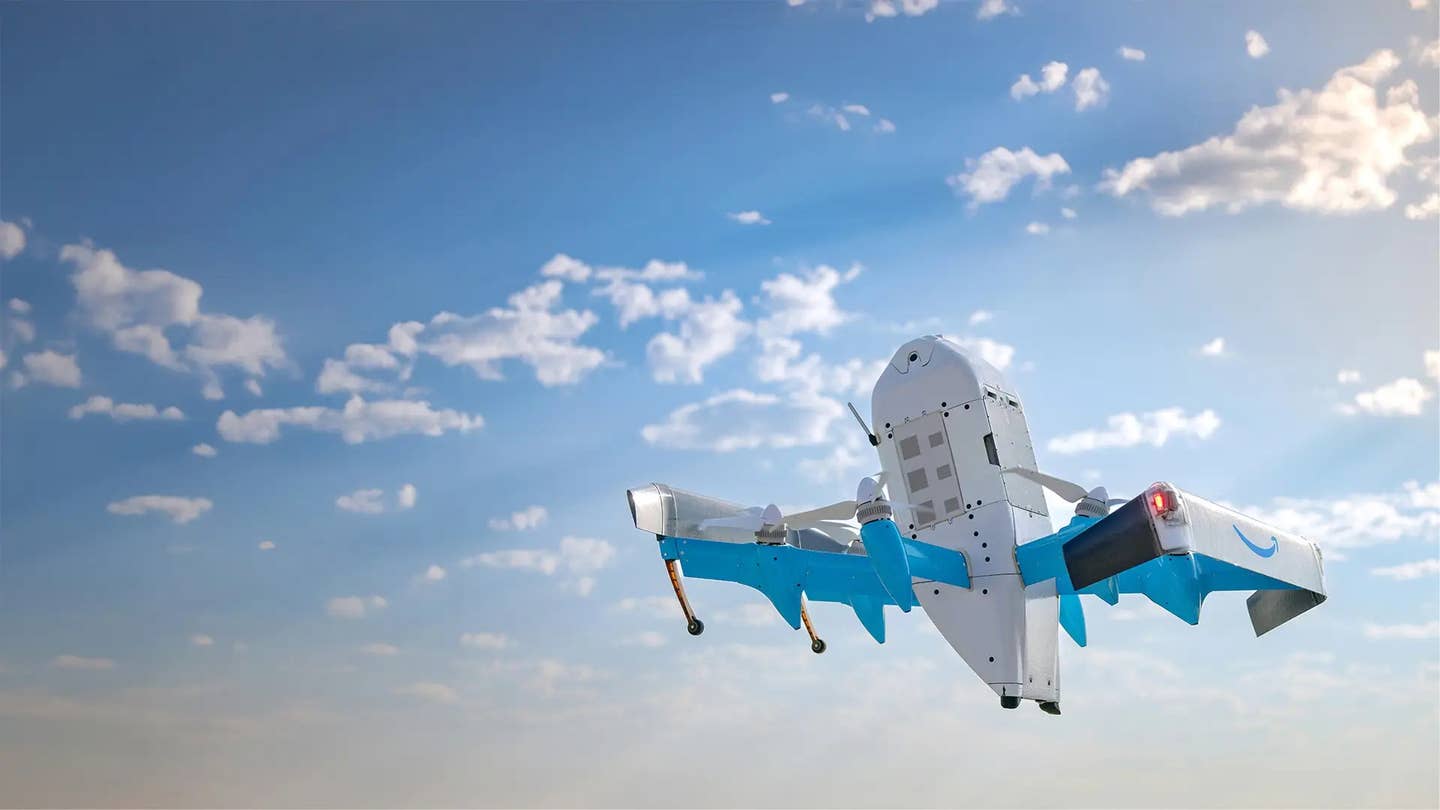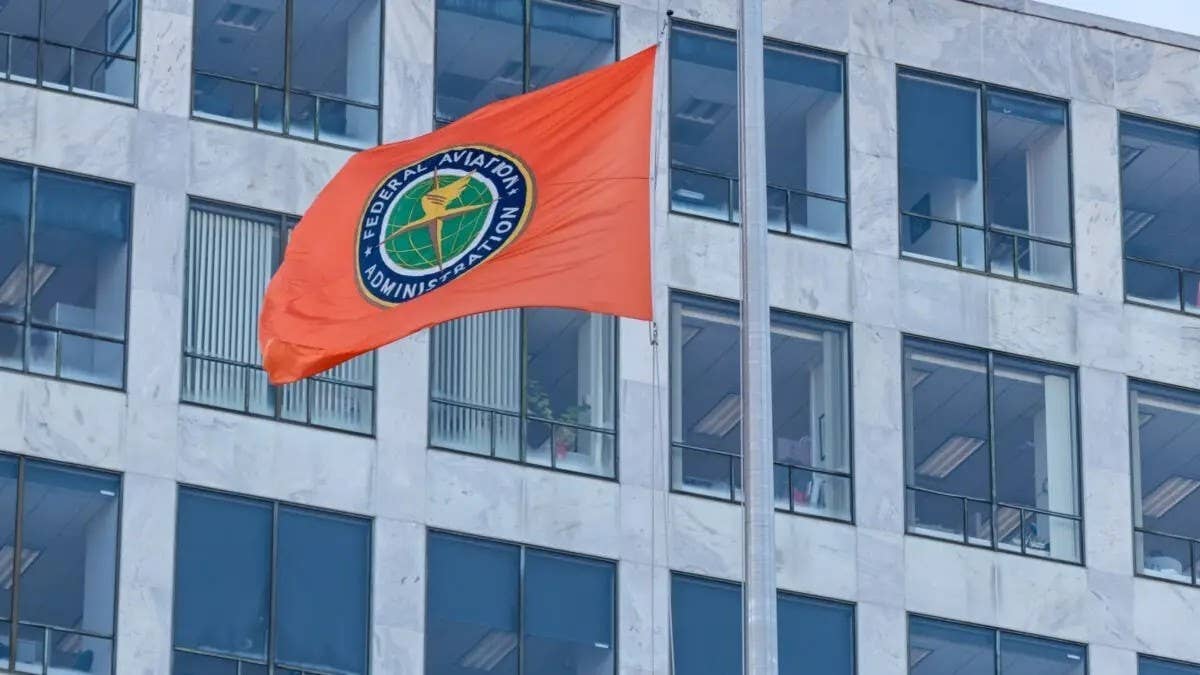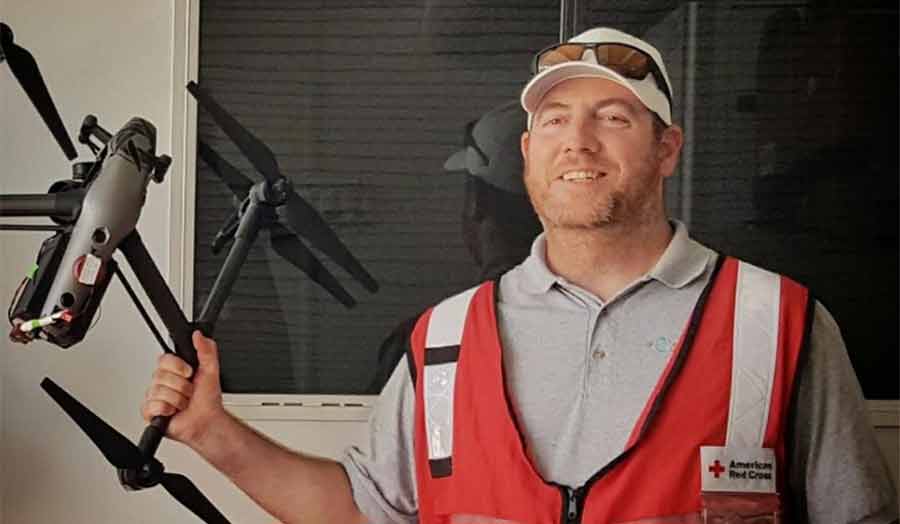
Daniel Herbert, a drone operator and Managing Director at Skygear Media, LLC, believes drones can play an important role in relief efforts following Hurricane Irma. Daniel Herbert
Drones can be used for a variety of search and rescue operations, but anyone who puts a drone in the air during a natural disaster has to be 100 percent sure they can do so safely. Drones can have a much more negative impact during and immediately following a severe storm if they are flown without approval or with safety in mind.
The use of drones after natural disasters is going to explode, especially after Harvey. In the short time operators have had them in the air in Texas they've realized how much benefit they could offer Irma operations, Daniel Herbert, a drone operator and Managing Director at Skygear Media, LLC, told Flying.
What to Know
First and foremost, pilots or operators need to make sure they are being an asset and not a liability to manned air support already in the air. A disaster scene is a confusing and dangerous place for all first responders, and throwing an unauthorized drone in the air makes it that much more dangerous and confusing. In almost all instances, it is best to wait until the critical search and rescue activities have concluded in the area you’re planning on flying into.
Only fly in active areas if you have been in contact with the Incident Commander, or one of his subordinates. Also, make sure you are following FAA guidelines and checking TFRs and NOTAMs.
How They Can Help: Real World Examples
There are times in emergency situations where a drone could be indispensable, and quite frankly the only option to save a life.
“One instance comes to mind from a video I saw on the news just last week. There was a group of first responders trying to reach someone trapped in a tree in the middle of raging waters,” DroneU instructor and veteran UAS operator Vic Moss recalled. “There really wasn’t an easy way to get a helicopter in there, and I’m not sure one was even available. In that instance, someone could have easily tied a light line to a drone and flown it over to the guy. They wouldn’t even need a release mechanism on the drone.
“The drone could have been crashed into the tree, or into the water on the other side of the tree,” he continued. “The guy in the tree could have easily grabbed the lead line and pulled the rescue line to him. You have to be willing to sacrifice your drone to save lives. The news story never mentioned if the guy was rescued.”
Another instance involved hospitals in Houston using drones to find a clear path for trucks to get in and deliver supplies.
News footage is another great way to use drones after an emergency. While the need for human interest stories is critical, it is very hard to see the scope of devastation without an aerial view. Drones are providing that footage, and helping raise awareness like never before.
The vast majority of good use of drones will come after the storms have passed, and the SAR activities have been scaled back.
“I know drone owners who have been able to post video on social media showing their neighbors who evacuated if their homes are safe or not. They’ve been able to provide relief to those whose homes are saved, and solace to those whose homes have been flooded,” Moss explained. “That way those homeowners are prepared when they are finally able to go to their homes. The uncertainty has always been the worst part of these disasters, whether it’s floods, hurricanes, or fires. Not knowing is painful.”
Drones are also being used at this very moment to assess damage in order to prioritize where the most good can be done. That information is not only being used by disaster relief agencies, but by governmental agencies to deploy resources. Getting that information out in a timely manner, while using the most cost effective resources possible has been crucial during the immediate aftermath of Harvey.
Small towns that normally don’t have the resources for in depth assessment are finding drone imagery incredibly valuable. They can get that information in minutes, for virtually free, instead of waiting on the limited resources manned aircraft have available to them. They’re getting information to the owners of critical infrastructure and communications equipment. That way they’re not wasting their own resources trying to figure out what needs the most attention.
Insurance companies will also be using drones extensively in the aftermath.
Avoiding Confusion
Another issue is communication between agencies. One of the local drone pilots just mentioned to me that yesterday he was told by a Texas State Trooper that the airspace was locked down and he couldn’t go fly and check on his neighbors’ houses. That is 100 percent false information. The FAA put out a news release saying that people could get in trouble for flying and interfering with manned aircraft. However, some Texas officials interpreted that as “don’t fly at all,” and said no one was allowed to fly their drones.
From there, it became a governmental game of telephone, and by the time it got to the boots on the ground, it was “Airspace is locked down.” That can’t happen in the future if drones are going to be utilized to their full extent.
“I’m not blaming the individual state troopers. They have a horrible job right now, and he’s probably only doing what he’s told,” Moss said. “Even the pilot I talked to, a very experienced Part 107 pilot, just said okay and didn’t fly. He’s been out in his boat all week providing assistance that way, and didn’t even try to fly until yesterday. He knew the issues everyone was facing with drones, and didn’t want to add to it.”
Addressing how drone operators and search and rescue operations can work together more efficiently is certainly one thing that has to come out of all of this, but there’s more according to Moss.
“The FAA needs to evaluate how it responded to drone users and Harvey as well,” Moss said. “They need to go after some of the ones who caused troubles. I think that would go a very long way to helping control drones in future disasters, whether natural or man-made. The pilots flying irresponsibly, whether 107 or 101, are making it very bad for those who are trying to fly under the rules in place, and with correct permissions.”
For more information on one of the groups doing real humanitarian work with drones on the ground in Texas following Harvey, visit Humanitarian Drones.
DroneUp is a drone aggregator app that is accused of promoting bad practices following the storm, such as reporting false information for personal gain.
“While in theory, it’s a good idea, it created more issues than assistance,” Moss said. “They encouraged operators to fly regardless of TFRs and manned ops, and they didn’t go through proper channels and procedures to get the drones in the air safety. They jumped too fast without understanding the complexity of the situation, and the necessity of SAR and First Responder involvement. In my opinion, DroneUp (and and any other similar drone aggregator) needed to wait and launch that full scale until after the storm and SAR efforts were over.”
They even posted images they did not own or take, claiming humanitarian work that they had nothing to do with.
“DroneUp has illegally used a photo I took of our team in the Houston area to promote their organization, claiming that we're working for them. This couldn't be further from the truth,” Herbert explained on a post in a Commercial sUAS group on Facebook. “We have left our families and jobs and fought through ridiculous difficulties to help and to prove to the world that proper drone integration in emergency management is truly a viable option. For a photo of our team to be taken and used to promote an unsafe organization that encourages illegal activity in the NAS is sickening to me. DroneUp and Tom Walker are trouble and seeking attention above responsible business and responsible flying. I encourage all of you to consider this prior to engaging with this organization.”
Drones will become the go-to aircraft for many emergency situation in the future. But they will never replace manned aircraft in many situations, rescue missions being one. And, of course, weather plays a much larger role in drone flight than in manned aircraft.
Drones are the future, but it can’t be a hodgepodge effort. There has to be coordination, whether it’s at the state, county, or town/city level. Incident Commanders and Disaster Points of Contact will have a drone boss with them on every event very soon. While not as soon as we’d like, probably much sooner than we think.
A special thanks to Vic Moss for providing so much information on this subject.

Sign-up for newsletters & special offers!
Get the latest FLYING stories & special offers delivered directly to your inbox


